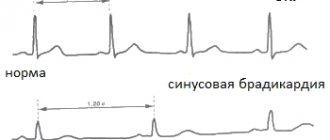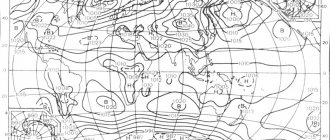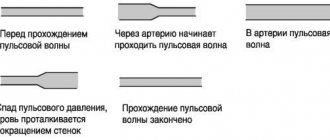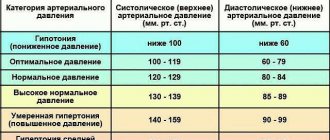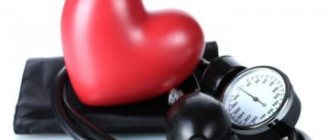- General formula
Pressure is a very important physical quantity that plays a huge role both in the surrounding nature and in human life. Outwardly invisible to the human eye, pressure can be very clearly felt by each of us. This has been learned especially well by older people who often suffer from high blood pressure (or vice versa from low blood pressure). But in our article we will talk more about pressure in physics, how it is measured and calculated, what formulas there are for calculating the pressure of different substances: air, liquid or solid.
Definition
In physics, pressure is understood as a thermodynamic quantity expressed as the ratio of the perpendicular pressure force to the surface area on which it acts. Moreover, according to Pascal's law, if the system is in a state of equilibrium, then the pressure on it will be the same for all points of the system.
In physics, as well as in chemistry, pressure is denoted by the capital letter P, coming from the Latin word “pressura” - pressure. (In English, pressure has remained almost unchanged - pressure).
Problem solving
In physics problems, pressure formulas may look different. Task one: you need to find the P exerted by the body on the ship and the ground under water when the diver is in motion. A person weighs 180 kg with equipment on land. The area of the foot is 360 square meters. cm. The force with which a person acts on the ship is 180/360 = 0.5 (kgf/cm). Using the table, the value can be converted to Pa. The result is 49 kPa. A force of 2.46 kPa is exerted on the ground under water.
Example 2: you need to calculate the absolute P of water if the depth is 150 m, the force is 765, and the body weight is 1.024 kgf/l. Solution: P = 765/735.6+1.024×150/10=16.4.
Example 3: the capacity of the cylinder is 40 l, the pressure in it is 150 kgf/cm2. We need to find V free air masses. Solution: initial P is calculated as follows: 150+1 = 151 kgf/sq.cm. The initial V is 40 liters. Free V is calculated p1xstart V/p2=6.04 cubic meters. m. In a similar way, problems are solved where you need to find P of any liquid, solid object, or gaseous substance.
General formula
From the classical definition of what pressure is, a general formula for calculating it can be derived. It will look like this:
P = F/S
Where F is the pressure force, and S is the surface area on which it acts. That is, in other words, the formula for finding pressure is the force acting on a certain surface, divided by the area of this very surface.
As can be seen from the formula, when calculating pressure the following principle always applies: the smaller the space affected by the force, the greater the amount of pressing force on it and vice versa.
This can be illustrated with a simple real-life example: it is easiest to cut bread with a sharp knife, because a sharp knife has a sharpened blade, that is, the surface area S from the formula is minimal, which means that the pressure of the knife on the bread will be maximally equal to the applied force F of the person holding the knife . But cutting bread with a dull knife is more difficult, since its blade has a large surface area S, and the pressure of the knife on the bread will be less, which means that in order to cut yourself a piece of bread you need to apply a greater amount of force F.
The general formula for pressure, in fact, perfectly describes the formula for the pressure of a solid body.
How to measure correctly
To check blood pressure readings, a device called a tonometer is used. At the moment, you can use mechanical, semi-automatic and automatic tonometers. In medical institutions, preference is given to mechanical models, and at home - automatic models. Next, we consider how to measure indicators with a mechanical device.
Before carrying out the procedure, it is important to calm down, the arrow on the pressure gauge should be at o, the cuff should be deflated. The person being diagnosed must sit so that his back rests against the back of the chair, his legs are parallel to each other, and the hand on which measurements will be taken is located at the level of the heart. It is prohibited to take measurements through the sleeve. The area of the ulnar fossa should be palpated to find the projection of the brachial artery. The cuff is fixed above this place. The bulb valve must be closed.
The phonendoscope is applied to the place of pulsation, and air is injected using a bulb. After the pulsation sound has stopped, you need to add 20–30 mm Hg. Art. and begin to slowly release the air. The moment of appearance of sounds (systolic blood pressure) and disappearance (diastolic blood pressure) is carefully recorded.
Important! You can measure blood pressure not only on the arm, but also on the leg. This procedure is usually carried out in medical institutions.
Units
According to the standards of the International Metric System, pressure is measured in pascals. One pascal from the classical formula is equal to one Newton (As we know, Newton is our unit of measurement of force) divided by one square meter.
But alas, in practice the pascal turns out to be a very small unit and it is not always convenient to use it to measure pressure, so other units are often used to measure pressure:
Hydrostatic Pressure Formula
As we know, different states of matter have different physical properties. Liquids differ in their properties from solids, and gases, in turn, differ from all of them. Therefore, it is logical that the methods for determining pressure for liquids, solids and gases will also be different. So, for example, the formula for water pressure (or hydrostatic pressure) will look like this:
P = p*g*h
Where small p is the density of the substance, g is the acceleration of gravity, h is the height.
In particular, this formula explains why when divers (or a bathyscaphe or a submarine) dive to a depth, the pressure of the surrounding water increases more and more. It is also clear from this formula why an object immersed in some kind of jelly will be subject to greater pressure than an object immersed simply in water, since the density of the jelly (p) is higher than that of water, and the higher the density of the liquid, the higher its hydrostatic pressure.
The formula we have given for hydrostatic pressure is valid not only for liquids, but also for gases. Therefore, when climbing high into the mountains (where the air is thinner, which means less pressure), as well as when descending into the underwater depths, a person, diver or climber must undergo special adaptation, get used to the fact that a different pressure will affect him.
A sudden change in pressure can lead to decompression sickness (in the case of divers) or “mountain sickness” (in the case of climbers). Both “queson” and “gornyashka”, as they are slangly called by divers and climbers, are caused by a sharp change in environmental pressure. That is, if an unprepared person suddenly begins to climb Everest, he will quickly catch a “miner,” and if the same person begins to descend to the bottom of the Mariinskaya Trench, he is guaranteed to receive a “queson.” In the first case, the reason will not be the body’s adaptation to low blood pressure, but in the second – to high blood pressure.
American divers in a decompression chamber designed to prepare them for deep-sea diving and adapt their bodies to the high pressure of the ocean depths.
Change in systolic reading
Under the influence of a number of factors, blood pressure can increase above the age norm (hypertension, hypertension) or decrease (hypotension, hypotension). The change in level can be short-term or long-term. The second option is considered dangerous and in most cases is a sign of pathological processes. Normal systolic blood pressure is 110–140 mmHg. Art. Optimal – 120 mm Hg. Art. The older a person is, the more the norm numbers shift upward.
Important! For adolescents 14–17 years old, the most optimal level is up to 129 mmHg. Art.
An increased systolic indicator, as a variant of the norm, can be observed in adolescence, when girls and boys are faced with changes in the body and changes in hormonal levels. This condition is considered temporary and is more often observed in young people 15–16 years old. However, experts say that such patients should be constantly monitored, since at the age of 35–40 years, hypertension may return in a more aggressive form.
And also systolic hypertension is typical for women and men of old age, which is associated with atherosclerotic changes in the blood vessels, especially with atherosclerosis of the aorta, which, as a result of the presence of atherosclerotic plaques, loses its elasticity. With systolic hypertension, patients complain of pain in the heart, shortness of breath, and throbbing headache. Systolic pressure can increase in combination with diastolic or in isolation.
Risk factors for increased systolic readings are:
Upper and lower blood pressure
- Genetic predisposition.
- Atherosclerotic changes.
- Diabetes.
- Sedentary lifestyle.
- Obesity.
- Alcohol abuse.
- Smoking.
- Stress.
With prolonged systolic hypertension, damage to the brain (stroke), retina (sharp decrease in visual acuity), kidneys (chronic failure), and heart (heart attack) are observed. The probability of developing complications is more than 80%. Treatment consists of changing lifestyle, adjusting nutrition and taking medications. The drugs used are diuretics, beta blockers, calcium antagonists, and ACE inhibitors.
Systolic hypotension can be observed when getting out of bed (orthostatic form), after eating (postprandial form), and with vegetative-vascular dystonia. Other reasons for decreased rates are congenital heart defects and heart failure, pathologies of the endocrine system, bleeding, fatigue, and the first trimester of pregnancy.
There are complaints of dizziness, headache, feeling of lack of air, severe weakness, pulsating sensations in the back of the head, decreased performance. With a critical drop in blood pressure, fainting may occur, requiring emergency care.
Partial pressure and its formula
Although the hydrostatic pressure formula is applicable for gases, it is more convenient to calculate the pressure for them using another formula, the partial pressure formula.
The fact is that absolutely pure substances are rarely found in nature, and this applies to both liquids and gases. Usually, in practice, various mixtures predominate in the surrounding world, and it is logical that each of the components of such a mixture can exert different pressures; such different pressures are called partial. Determining the partial pressure is simple - it is equal to the sum of the pressures of each component of the mixture in question. Hence the partial pressure formula will have the following form:
P = P1+P2+P3
Where P1, P2 and P3 are the pressures of each of the components of the gas mixture, the so-called “ideal gas”.
For example, to determine air pressure, the usual formula for hydrostatic pressure is done only with
oxygen is not enough, since air in reality is a mixture of different gases, where in addition to the main component oxygen, which we all breathe, there are others: nitrogen, argon, etc.
Such calculations must be done using the partial pressure formula.
Diastolic indicator
Standard indicators of normal lower pressure are 60–90 mm Hg. Art. Diastolic blood pressure can also increase or decrease under the influence of a number of factors, which occurs in combination or in isolation. Experts say that an isolated increase in numbers occurs against the background of violations on the part of the vessels of the smallest diameter - capillaries. The following conditions are considered common causes:
- Diseases of the renal apparatus (oncological processes, atherosclerotic changes, inflammation).
- Malfunction of the thyroid gland, accompanied by the release of large amounts of hormones.
- Alcoholism and smoking - due to the abuse of alcohol and nicotine-containing substances, blood vessels lose their elasticity and ability to contract.
- Impact of stress.
- Pathologies of the musculoskeletal system in the form of osteochondrosis and intervertebral hernias.
- Obesity.
- Abuse of fried, smoked and salty foods.
Important! A healthy adult who is actively involved in sports may also have an elevated lower blood pressure reading. This is a variant of the norm.
A decrease in diastolic pressure at normal levels is often observed in people over 50 years of age. This occurs with the gradual depletion of the heart muscle. And also the reasons for the low rate may be intoxication of the body, nicotine addiction, lack of production of thyroid hormones, dehydration and blood loss, anemia, toxic shock.
The table shows normal blood pressure values for different age categories
Pressure measuring instruments
Of course, humanity has invented many devices that allow you to quickly and conveniently measure pressure levels. To measure ambient pressure, also known as atmospheric pressure, a device such as a pressure gauge or barometer is used.
This is what a classic barometer for measuring atmospheric pressure looks like.
To find out a person’s blood pressure, which is often the cause of ailments, a device known to most people called a non-invasive tonometer is used. There are many varieties of such devices.
In their research, biologists also calculate osmotic pressure - this is the pressure inside and outside the cell. And meteorologists, in particular based on pressure changes in the environment, predict the weather for us.
Notes
- Kuznetsov V.N.
Tropical seasons Dry season • Rainy season Weather conditions Thunderstorm (Snowstorm) • Lightning • Tornado • Waterspout • Tropical cyclone • Extratropical cyclone • Blizzard • Freezing rain • Dust storm • Firespout • Dust devil Precipitation Drizzle • Rain • Snow • Grain • Hail • Dew • Hoarfrost • Frost • Ice Weather forecast and diary Air temperature • Cloudiness • Wind • Wind direction • Atmospheric pressure • Relative humidity
Video
Author: Pavel Chaika, editor-in-chief of Poznavaika magazine
When writing the article, I tried to make it as interesting, useful and high-quality as possible. I would be grateful for any feedback and constructive criticism in the form of comments on the article. You can also write your wish/question/suggestion to my email [email protected] or Facebook, with respect, the author.
Author page
